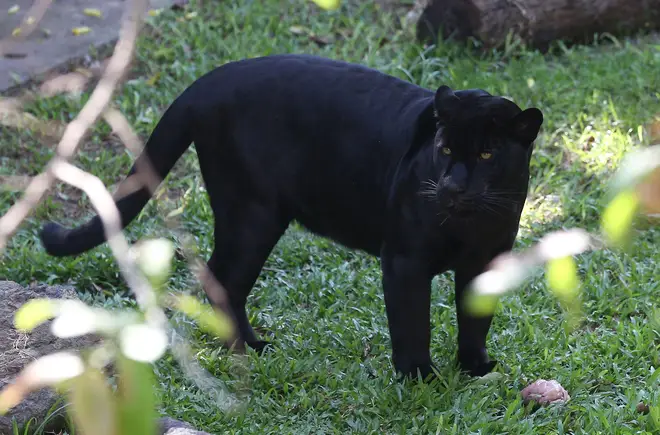
Ali Miraj 1pm - 4pm
12 May 2023, 07:01 | Updated: 12 May 2023, 07:36

Big cats are on the prowl in the UK - and there is finally evidence to prove it! An explosive new documentary, Panthera Britannia Declassified, has revealed that black panthers and other big cats are roaming the British countryside.
The shocking revelation comes after documentary makers spent years investigating sightings across the country.
And now, DNA from a black hair caught on a barbed wire fence following a sheep attack has offered "definitive proof" of the big cats' existence.
The hair was recovered from a farm in Gloucestershire where there had been some "unusual predatory" activity. And video footage of a large black animal captured only a few miles away from the sample was enough to raise suspicion.
Forensic scientists at a top laboratory have now confirmed that the hair matches the DNA of a big cat species with a 99% match.
For decades, people in Gloucestershire and across the UK have reported sightings of what appear to be black leopards.
Witnesses have described them as "healthy" and "confident", suggesting they grew up in their environment.
These stealthy predators mainly prey on wild animals like deer, but they've also been reported to attack foxes, ducks, geese and even pigeons. While they can switch to sheep, it seems that they much prefer natural game.
Read more: Royal superfan locked up for 13 hours during Coronation after standing near protesters

However, the tooth pit analysis conducted at the Royal Agricultural University suggests that the relatively large carnivores that fed on the sheep carcass found at the same farm as the DNA result much prefer natural game.
Matthew Everett, from Dragonfly Films, said: "The DNA was from hairs caught on a barbwire fence where there had been some unusual predatory activity.
"It's taken five years for the production team to find such evidence and film its journey from collection to analysis.
"People in Gloucestershire and Britain have described what appear to be black leopards for decades. So, a leopard DNA result from a black hair sample is unsurprising.
"This is not the first such DNA result and is unlikely to be the last.
"There is a great deal of 'secondary evidence' for these cats, such as consistent witness reports, but hard evidence like DNA is hard to get, so the contribution from this documentary is very helpful.
"Collecting such evidence from local people, farmers and landowners is essential - Citizen Science like this will hopefully help us learn more about the Bagheera type big cats which may be quietly naturalising here."
The current findings are not the first of their kind, but they provide valuable evidence to help understand possible big cats living in the British countryside.
Dragonfly Films is currently looking into broadcast options for the upcoming doc, while an earlier version of the film Panthera Britannia is available on Amazon Prime, Vimeo and Apple TV.
In 1976, the UK introduced the Dangerous Wild Animals Act, which required owners of certain exotic animals to obtain a license and meet strict safety standards. This led to a surge in the number of abandoned or released exotic pets, including big cats, snakes, and primates.
The aftermath of the act's implementation resulted in the formation of animal sanctuaries and rescue centers, as well as concerns over the welfare and safety of both the exotic animals and the public.
Some of the abandoned animals were able to be rehomed, while others were too dangerous to be domesticated and had to be euthanized. The act continues to be in effect today and has greatly reduced the number of exotic animals kept as pets in the UK.